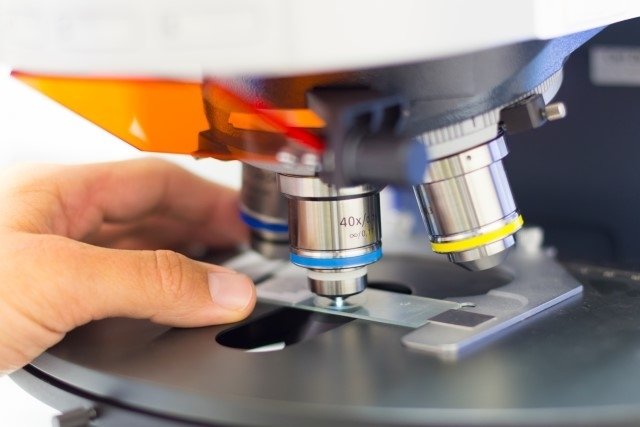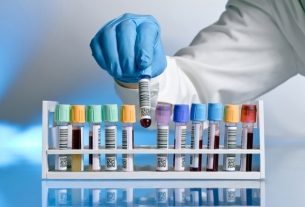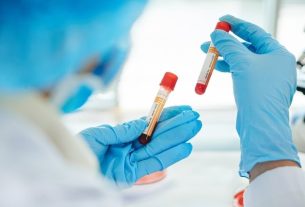The cytology exam aims to evaluate cells in a specific region of the body or fluid, being able to identify the presence of signs of inflammation, infection, bleeding or cancer by observing the sample under a microscope.
This exam is usually indicated to analyze the contents of cysts, nodules, unusual liquids that accumulate in body cavities or abnormal secretions such as sputum.
Some of the main types of cytology are those performed in the aspiration puncture of thyroid or breast nodules, as well as in gynecological examinations or in the aspiration of respiratory secretions, for example.

What is it for
The cytology test is used to investigate and diagnose:
- Inflammation;
- Infections, such as HPV and tuberculosis, for example;
- Cancer;
- Cysts and nodules in the thyroid and breast, for example;
- Bleeding without apparent cause.
The cytology exam is mainly indicated for women as a way to prevent cervical cancer, for example, because by evaluating the cells that are part of the uterine tissue, it is possible to observe whether there are signs indicating infection with the HPV virus and/ or cervical cancer.
What is the difference between cytology and histology?
Cytology is an exam that evaluates the characteristics of the cells present in a certain collected material, while histology is an exam that aims to evaluate entire pieces of tissue, which in turn corresponds to the set of cells specialized in a certain function, and is then possible to observe the composition and architecture of the material.
Therefore, it is possible to say that cytology and histology are complementary tests and can be requested together by the doctor.
Types of cytology
Cytology can be performed in different situations, the most common types being:
1. Thyroid aspiration cytology
Aspiration cytology or fine needle aspiration puncture (FNA) of the thyroid is a very important test to evaluate thyroid nodules and cysts, as it is capable of indicating whether it is a benign or malignant lesion.
In this exam, the doctor will puncture the nodule, guided by ultrasound, and obtain samples of the cells that make it up. Then, the material is placed on a slide to be analyzed under a microscope, and it can be observed whether the cells have characteristics that could suggest cancer.
In this way, aspiration cytology is useful to guide the best form of treatment for a nodule, indicating the need for only follow-up, in benign cases, surgery to remove the thyroid, in cases suspected of malignancy, as well as chemotherapy if identified. the cancer. See more about PAAF.
2. Breast aspiration cytology
Breast aspiration puncture is one of the most frequent types of cytology and is very important for evaluating characteristics of breast cysts or nodules, especially when they grow quickly or present characteristics suspicious of cancer.
As with the thyroid puncture, the test can be collected guided or not by ultrasound, and then the material is sent to the laboratory so that the cytology test can evaluate the cells that make up the aspirated material.
3. Oncotic cytology
Oncotic cytology, also called gynecological cytology, is a highly requested exam for women of reproductive age and with an active sexual life, being carried out by scraping and “brushing” the cervix to collect samples of cells from this region, which will be fixed in a slide and sent to the laboratory.
Thus, this exam is capable of identifying vaginal infections, STIs and signs of cervical cancer. See more details on how oncotic cytology is performed.
4. Cytology of respiratory secretions
Respiratory secretions such as sputum from the lungs or nasal mucus can be collected, usually by aspiration, to be evaluated in the laboratory. This type of test is usually requested to try to identify the microorganism causing an infection, such as fungi or bacteria, such as tuberculosis bacillus, for example. In addition, it can also assess the presence of cancer cells, blood or signs of allergies.
5. Cytology of body fluids
Cytology can also be performed to evaluate cells present in body fluids. An example is the cytology of ascitic fluid, which is a fluid that accumulates in the abdominal cavity, mainly due to abdominal diseases, such as cirrhosis. This exam may be requested to clarify the cause of ascites, as well as to look for infections or even signs of abdominal cancer.
Liquid that accumulates in the pleura, which is the space between the membranes that cover the lungs, in the pericardium, which is the membrane that surrounds the heart, or even the liquid that accumulates in the joints, due to arthritis caused by autoimmune or infectious diseases, for example.

Sign up for our newsletter and stay up to date with exclusive news
that can transform your routine!
Warning: Undefined array key "title" in /home/storelat/public_html/wp-content/plugins/link-whisper-premium/templates/frontend/related-posts.php on line 12
Warning: Undefined array key "title_tag" in /home/storelat/public_html/wp-content/plugins/link-whisper-premium/templates/frontend/related-posts.php on line 13



